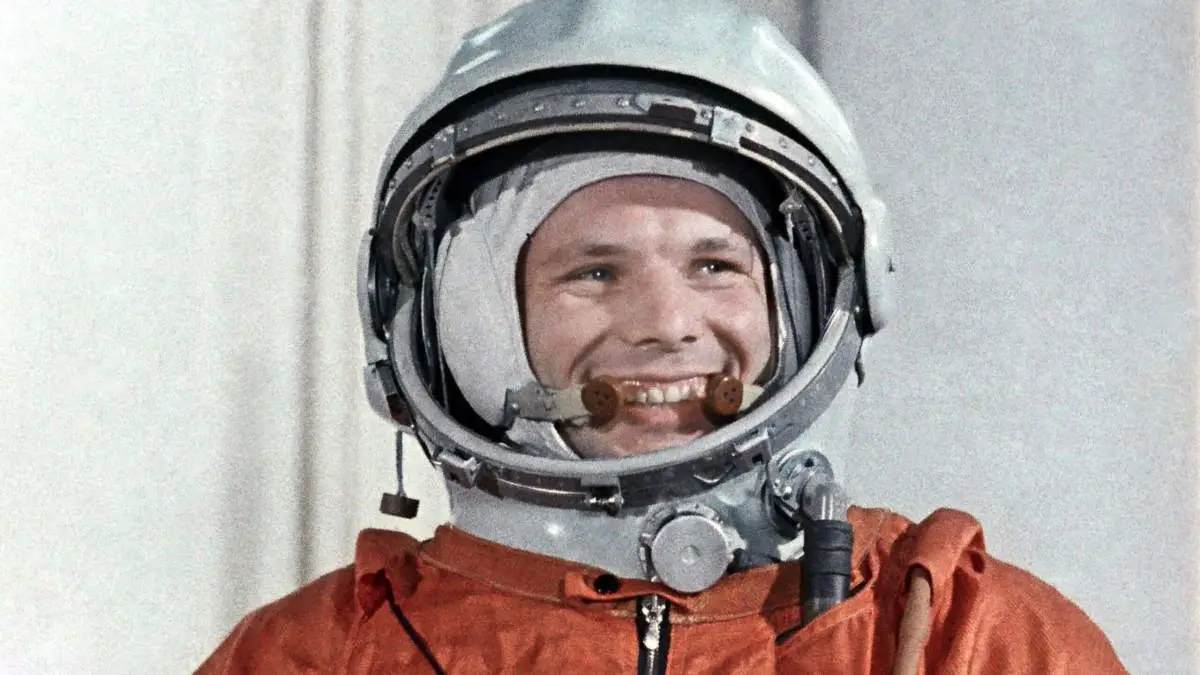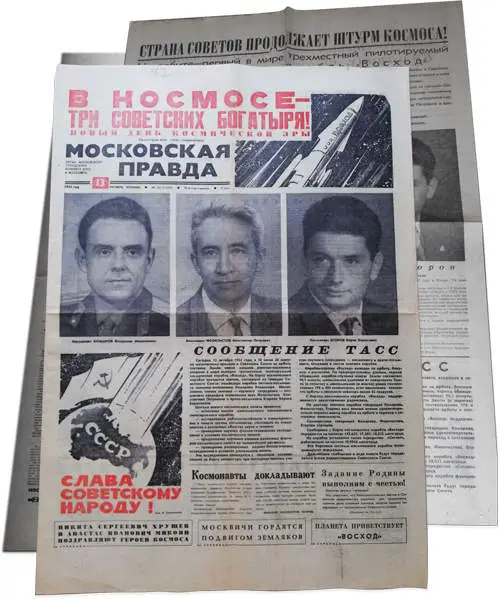On April 12, 1961, Soviet cosmonaut Yuri Gagarin became the first human to fly into space. His vehicle, Vostok 1 circled Earth at a speed of 27,400 km/h (17,025 mph) with the flight lasting 108 minutes. Vostok’s reentry was controlled by a computer, and Gagarin wasn’t controlling the spacecraft, unlike the early U.S. human spaceflight programs. Instead, at about 7,000 meters (23,000 ft), he ejected from the descending capsule ejected from the spacecraft and landed by parachute.
Today’s (April 12) story of what happened this day in Science, Technology, Astronomy, and Space Exploration history.
Yuri Gagarin becomes the first human in space
“Poyekhali!!” with that one Russian word, meaning “Let’s go!”, Yuri Gagarin’s Vostok 3KA space capsule was launched from Baikonur Cosmodrome on April 12, 1961. He became the first human to reach orbital velocity and complete a full orbit around the Earth.
Vostok 1 skimmed the upper atmosphere at 169 kilometers (91 nautical miles) at its lowest point. During the spaceflight, he was not allowed to operate the controls because the effects of weightlessness had only been tested on dogs so far. The mission was instead controlled by ground crews, and an override key was provided in case of emergency.
After the historical flight that lasted 108 minutes, he was no longer Senior Lieutenant Yuri Gagarin; he was Yuri Gagarin, hero and icon.
NASA’s Project Mercury astronaut Alan Shepard became the first American in space less than a month later.

Video: Yuri Gagarin, the first human in space
When Yuri Gagarin parachuted from his tiny capsule and landed on farmland, there was a 5-year-old little girl and her grandmother where he landed. They were out in the fields and planting potatoes. 60 years later, in 2020, BBC found that girl and interviewed her.
Rita Nurskanova, the eyewitness of Yuri Gagarin’s landing, says:
“I looked around and saw something orange and beautiful. I didn’t know what it was. It was coming towards us. Granny was frightened. She grabbed my hand and we wanted to run back to the house.”
“But, he said ‘ladies, stop. I am one of our guys!’“
And I said “granny, stop, he’s speaking Russian. He’s probably a human.”
The interviewer asks: “What do you remember most about this spaceman, who was suddenly standing in front of you?”
Nurskanova answers: “His smile, of course. His smile. And he had such a kind voice. Granny asked, ‘Where are you from? How did you get here?’ and he said ‘I came on a ship.’ She said, ‘There’s no sea near here. What ship?’ He replied ‘I came from the sky.’“.
The interviewer asks: “How does it feel being part of history?”
Nurskanova answers: “I think I was very lucky to be the first to greet him, that I was in that field, planting potatoes with granny. I’m proud that it was our Soviet cosmonaut who came down from the heavens into our field.”
After performing the first human spaceflight, Yuri Gagarin instantly became an international celebrity and was awarded many medals and titles, including Hero of the Soviet Union, his nation’s highest honor.

Vostok 1 was Yuri Gagarin’s only spaceflight. After the death of Soyuz 1 cosmonaut Vladimir Komarov (6 March 1927 – 24 April 1967), Soviet authorities feared that a national hero (Yuri Gagarin) might be killed too, so they banned him from further spaceflights.
But, unfortunately, on March 27, 1968, while on a routine training flight, Yuri Gagarin and flight instructor Vladimir Seryogin died when their MiG-15UTI crashed. Yuri Gagarin was 34 years old and Seryogin was 45. The bodies of Gagarin and Seryogin were cremated and the ashes were buried in the walls of the Kremlin on Red Square in Moscow.
April 12 in Science, Technology, Astronomy, and Space Exploration history
- 1981: The First Space Shuttle launched
- 1961: Yuri Gagarin became the first human to fly into space
Sources
- “Yuri Gagarin from the Soviet Union was the first human in space” on the NASA website
- Yuri Gagarin on Wikipedia
- Vostok 1 on Wikipedia
- “Yuri Gagarin: First Huan in Space” on the NASA website
- “Remembering Yuri Gagarin” on the NASA website
- Moon Landings: All-Time List [1966-2025] - February 2, 2025
- What Is Max-Q and Why Is It Important During Rocket Launches? - January 16, 2025
- Top 10 Tallest Rockets Ever Launched [2025 Update] - January 16, 2025

